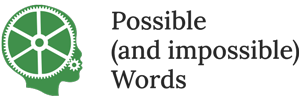
All rounders
Not one trick ponies
We humans are rich in a wide variety of capacities which no other species can come close to challenging.
We don’t just have language. We can do experiments, write and play music, draw or paint a likeness, throw or kick a ball at a target or hit it with a stick or a bat, carry out successive operations with numbers, and more. Some individual animals have learnt what may seem like the first steps to some of these skills. This can then be put on show, to be admired or unfairly mocked. But despite the best efforts of circus masters and entertainers, non-humans do not seem to be capable of any of these characteristic human capacities to anything which would be mistaken for a human level of skill.
What about language? Some people believe that their dogs understand everything they say, but only the rarest of dogs, specially trained over a long period, learn to understand some word combinations, such as “Put the ball in the bowl” or “Get the paper from the door”. This is compositionality, but of a very elementary sort. And the nature of this supposedly human-type understanding is plainly quite different from that of small humans who learn very early that there are special classes of words, like what and where, and elements of the sound structure which are understood in relation to some position in the structure other than where they are pronounced. By the proposal here, the essentials of this understanding normally develop between the ages of one and three. This is commonly known as ‘Universal Grammar’ – what human beings share – although see Modesty and Caution and Contending views for a variety of quite different perspectives.
Just one skill, balancing a ball on the nose, seems to come more naturally to sea lions than to humans. Apart from that, humans are consummate all rounders.
It may be that all the singularly human capacities other than language are themselves contingent on language. It is probably significant, in this regard, that it is language which develops first.

